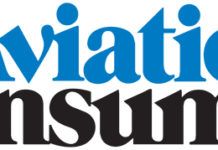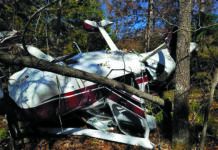I’d say the trip is off to a bad start when you pull the cover off the airplane and slide into the cabin only to find holes in the panel and a bunch of empty mounting racks in the radio stack. After a few seconds the sickening reality sinks in: Somebody lifted your high-priced avionics. That’s a tale of woe from a Mooney owner at a big-city airport, and I’ve talked to plenty others who lost avionics and portable gadgets in otherwise sleepy backwoods airfields. This is hardly a new problem. Thieves have targeted aircraft electronics for as long as I can remember.
In fact when I was a green avionics guy in the late 1980s the problem was so widespread that every radio we pulled from a stack was checked against the serial numbers logged in the maintenance records, and also against a stolen avionics database. In those days the flagship radio—and a hot number on the black market—was the King KX170B navcomm. These old radios have a thin tin data identification tag affixed (essentially glued) to the rear chassis. It wasn’t uncommon to pull the radios and find that someone switched the tags, a shell game that made it impossible to keep track of which radio belonged to a given aircraft. Some radios had no tags at all, technically making them unairworthy per published specs. These days the hot numbers are Garmin GNS and GTN navigators.
I reached out to the Aviation Crime Prevention Institute, which for years has maintained a database of stolen gear and aircraft, and in the past has been a good resource. But not now. The database is stale by a couple of years, and communicating with the organization was difficult at best. If I had my radios lifted and tried to make contact for its help, I’d be pretty frustrated. But our own resident insurance pro, Jon Doolittle at Sutton James Aircraft Insurance in Connecticut, had some good news and worthy advice for those worried about avionics theft, whether parked in the home-base tiedown or on a transient ramp. Doolittle reiterated that most policies cover theft, and any damage caused in the course of the theft. Smashed windows, broken cabin doors and instrument panel and interior damage are a few of the casualties that tag along with a break-in. The lifted avionics components are certainly included because the policy pretty much says it covers all of the aircraft’s permanently attached operating or navigating parts, even if temporarily removed for service. So an MFD screwed into the panel is covered, even if it’s removed for repair and the freight company loses it. But there are some things to consider. Your insurer probably isn’t going to buy you factory-new components if it can serviceable ones. That’s not always optimal because the unit sourced could very we’ll be older (and in worse cosmetic condition) than the original. Most people simply want their own stuff back.
But what about the poor soul who loses multiple Bose headsets and an iPad? He may be out of luck because they probably aren’t covered. That means keep portables out of sight when parking even on quick turns. We’ve all done it. Set the parking break, put the headsets on the glareshield, walk into the FBO to pay the fuel bill leaving the airplane unlocked (and sometimes the door open), inviting a quick heist. The JetShades portable window shades are convenient because they can be left in place all the time, and certain models completely inhibit the view inside the cabin. When parked for the long term, make the aircraft difficult to enter by using a tight-fitting cabin cover and park under lighting when possible.
Garmin told me one of the most important things you can do as an owner of new avionics is to make certain the installing dealer completes the registration. The company keeps tight records of registered equipment, and if the gear was stolen it can be flagged should it ever go back to the factory for repair. Record the serial numbers of the equipment in the logs, and never leave those logs in the aircraft or someplace vulnerable to theft. Once the new avionics are in, Doolittle made it clear that you should absolutely let your insurance carrier know that you made substantial avionics upgrades (and also any engine and paint mods), and insure the airplane for what you can sell it for with those improvements.
The reality is we’re all potential targets for aircraft theft. A friend who retired from years of airborne law enforcement service told me an amusing story of one overnight trip that had him and his partner stopping at the airplane on the way back from a late dinner to grab something from the cabin. In the dark of night they found a thief laying across the front seats of the bureau’s airplane unscrewing the radios. You can bet that it was a bad night for the thief, and a good night for the two federal agents because they got to fly the airplane home the next morning with all the electronics in place. —Larry Anglisano





